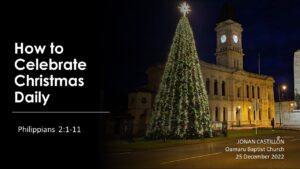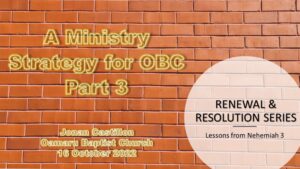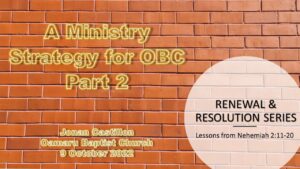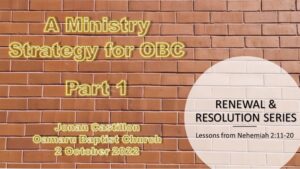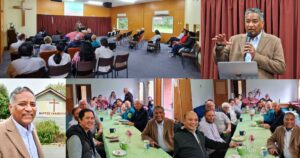Is Christmas a season or a one-day affair only? How can we celebrate Christmas daily? Read this Christmas Day message.
Sermons
A Ministry Strategy for OBC Part 3
In Part 3, I presented the third goal of the Ministry Appreciation and Participation Toolkit with Nehemiah 3 as the basis.
A Ministry Strategy for OBC Part 2
I am sharing the second part of our sermon series on Nehemiah and relating them to creating a ministry strategy for Oamaru Baptist Church.
A Ministry Strategy for OBC Part 1
This message is the first of the four parts of “A Ministry Strategy for OBC”, based on Nehemiah 2:11-20, delivered on 2 October 2022 at OBC.
Distinctives of a Lively Church
Ravi Musuku, President of the Baptist Churches of NZ, visited and preached at the Oamaru Baptist Church on 25 September 2022.
